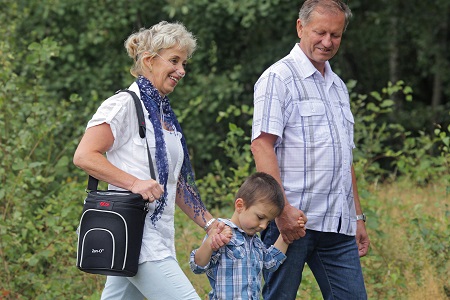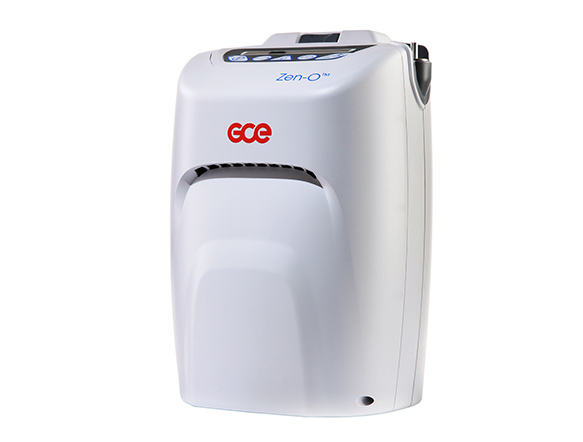The hustle and bustle of the holiday season are among us, and it provides us time to reunite with family and loved ones. But, the sad truth is that millions of people with chronic obstructive pulmonary disease (COPD) face issues while flying. Since the advent of portable oxygen concentrators (POCs) like the Pulse dose, traveling with oxygen has become much easier. With these devices, you can use a battery pack, recharge, plug into a wall or cigarette lighter in a car, and even take them with you on an airplane.

The oxygen concentrators come in several different makes and models, and their features vary widely, so finding the right one is crucial. It should deliver enough oxygen so that your saturation is at least 90 percent at rest and during exercise. POCs are available for rental or purchase from several oxygen suppliers. So, if you also feel traveling stressful due to any respiratory issue, you should read this article to find out more about Pulse dose portable oxygen.
What is a Pulse Dose Portable Oxygen Concentrator
Pulse dose oxygen conservers regulate and control medical-grade oxygen from high-pressure cylinders. Pulse dose is designed to fit easily on an oxygen cylinder thanks to its compact design and lightweight construction. With the Pulse Dose (PD) waveform, oxygen in the cylinder is conserved at a ratio of 3:1. With a continuous flow regulator, the same cylinder could be used by the patient for considerably longer.

Why do you a need for portable oxygen?
While traveling to high altitudes or living at high elevations, some people may become hypoxemic. You can determine if you need oxygen at a high altitude by reading your pulse dose oxygen conserver at rest and during activity when you are at a high altitude.
Some pulmonary function laboratories can also perform an altitude simulation test to determine your oxygen saturation at altitude. Pulse dose (PD) readings are taken after breathing a mixture of 16 percent oxygen, equivalent to air at 8,000 feet, and then breathing a mixture of 2 percent oxygen.
When you are at higher elevations, inform your provider if you feel you are hypoxemic so that they can order the appropriate testing.

Portable Oxygen Needs and Air Traveling
A commercial airline must maintain cabin pressure no higher than 8,000 feet above sea level. If you need to travel by plane, you should consult with your pulmonologist. Your pulmonologist may order an altitude simulation test to assess your ability to fly at this cabin pressure.
A portable oxygen concentrator (POC) is the only oxygen equipment allowed on airplanes. You must bring an oxygen concentrator with you if you need oxygen while on a flight, and you must notify your airline in advance. If you need a POC on the plane, they may require a doctor's letter. You can rent a POC on the internet or through your oxygen supplier if you don't own one.
Steps to Carry Portable Oxygen Concentrator Safely During Flight

1) Contact the airline: Prepare for any special accommodations several weeks before your flight by contacting the airline and obtaining their policy. The airline may request a physician's letter, some medical documentation, and a current prescription for oxygen. It will be much easier to transition if all of these documents are in place before your flight.
2) Direct flights: Direct flights are the best way to travel whenever possible. This will allow you to avoid repeatedly boarding and disembarking with your oxygen concentrator from the plane. You will also need more batteries if you have layovers. This will result in a longer total flight time.
3) Keep your unit charged: During your wait for boarding or any layovers, keep your unit charged with AC power. Most airlines do not allow passengers to charge their devices (AC or DC power) during flights. Before boarding on the plane you are waiting for your flight, you can often plug your oxygen concentrator into a wall outlet. This will not only enable you to keep the concentrator running without a battery, but it will also charge it.
4) Efficient usage of Portable oxygen: When traveling to and from the airport, use your portable oxygen concentrator's DC capabilities. So, you don't need to use the battery to operate your POC. As a result, the battery capacity will remain intact if it does not replenish what is already being used. It would be best to use a car DC outlet (cigarette lighter) while taking a cab or getting a ride. It will help if you remember that some units are restricted when using DC power.
5) Use pulse dose if possible: Some portable oxygen concentrators, such as Zen-o come with a dual option of continuous and pulse delivery. Use a pulse dose setting when sitting or resting if you can. The battery life can be extended with the pulse dose settings in many machines we carry.
Keep a pulse dose oximeter on hand so you can always check your oxygen level. Your oxygen saturation can be affected by altitude differences, increased activity, etc. While traveling, you should always be aware of your oxygen levels.
6) Additionally, you should board the plane first to have enough time to properly store your Portable oxygen concentrator without moving around other passengers. You should carry products that slide underneath the seat in front of you, but you may need to make other accommodations in some cases.
7) If you plan to board with a portable oxygen concentrator, inform the airline employees at check-in. Airline companies often allow people with special needs to board first.
To comply with FAA requirements, your concentrator's battery must last at least 150% of the flight duration. If you were flying for six hours, you would need nine hours of battery life. Find out if your airline requires additional battery life.
8) Even if the flight is short, you should carry two batteries. By having an extra battery, you can use it as a backup if the first one fails.
9) Ensure you are current on the FAA's portable oxygen concentrator regulations.
Bottom line
You can spend a lot of money on a portable oxygen concentrator if you live on a fixed income. Due to this, you may rent the concentrator during your vacation to test it out and see if it is right for you. The use of portable pulse dose oxygen allows you to travel safely without putting your health at risk. Your holidays become more memorable, enjoyable, and safe when you use portable pulse dose oxygen.